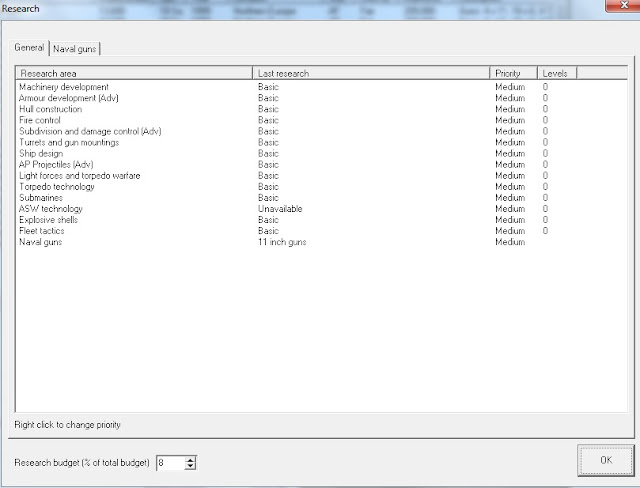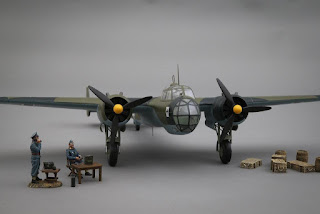from DAN VERSSEN GAMES
All that now follows establishes that both PH and U-Boat Leader follow similar effective paths in all other respects. 4 Campaign cards take us from the early years in The Battle Begins [Sept 1939 - May 1940] on into the Axis domination of The Happy Times [June 1940 - May 1941] and up to the period of parity and then the gradual British upturn in The Hunted [June 1942 - June 1943]. The fourth Campaign is, for me, something of an unknown sideshow taking us to the Caribbean and the American coast in Operation Drumbeat [Feb 1942 - June 1942]. I'm not sure whether this was an eye to the American market, though Gato Leader which takes us to the Pacific war with American submarines will certainly satisfy that desire.
Each Campaign contains the ability to play at Short, Medium and Long length. The length of campaign determines the number of SOs [Special Operation] points that you receive and the number of patrols each submarine must make. SOs are mainly used to buy your submarines. In PH your aircraft was designated by its call sign [e.g. Digger]: in U-Boat Leader, each submarine has an historical U-boat commander's name on the card. I liked the call signs and feel that being able to sally out with such characters as Gunther Prien makes play even more immersive. You can buy each submarine card at one of four levels, Green to Ace, as against the six levels of pilot in PH.
Above are the cards for those first four submarines.
If you have your own copy of PH or have read my review of that game, you will quickly see that U-Boat Leader is marginally simpler and easier to play at each stage that I'm now going to take you through.
The Strategic Segment especially is much quicker than the equivalent procedures in PH. Choose your submarines and spend the few SOs you may have kept back after putting your submarine group together on such things as Special Missions such as Raider or Air Searches and Supply ships. That's more or less it. There is none of the lengthy deliberation on what types of ammunition and missiles you need, as each sub card tells you how many torpedoes you have in store and ready loaded and whether it has a gun capacity for surface firing. Torpedo capacity may vary, but all subs with guns get 6 potential shots! Place your subs in whatever ports are available and you're ready to sail on to the Operational Segment.
To my surprise I rather missed the more complex decision making of PH. On the other hand, I did like being able to get down to the action quicker and here there is a major difference, as your U-boats have an Operations Segment where each moves individually on the Campaign map from sea area to sea area drawing and resolving Event cards as they do so. Though a simple process, I like the extra dimension of deciding how far you're going to move and finding out what happens as you keep pressing on.
When you have moved all your subs, you then change to the Tactical Segment and once more sub by sub roll to see if you make contact with the enemy. The possibility is from zero to three contacts, with each contact giving you the opportunity to draw a Convoy card. When you have drawn a Convoy card reduce the Contact marker by one. The size and composition of the convoy may vary and, if you don't like what you see you can always decide to abort that encounter.
A close up of the Tactical Display with two Merchants identified.
One has taken damage, the other so far is unscathed.
If you do decide to tackle the convoy, then in some cases you may be able to form a wolfpack, if you have chosen to move more than one sub to the same sea area and the pickings look particularly rich.
You move your subs one space if submerged and two on the surface, while very simple and easy mechanics govern the movement of enemy ships. As these come within range, you'll draw an appropriate card which will identify the ship and you will place its named marker on the display. This whole part of the game is engrossing with all relevant features taken into account through very accessible rules.
And so the heart of the game is under way. Decisions, decisions! The element I always appreciate in a game. Attack on the surface, so that you can use your gunnery as well as torpedoes and become a more easily identified target by any Escorts. How many torpedoes to launch at one target to improve your chance of hitting? How do you react to being attacked? Always loved Silent Running and Crash Dives in warfare? They're both simple options that you can go for.
At this point the following familiar and in most cases identical elements from PH kick in. Your subs indicated on their card as aggressive fire first, then the enemy and then cautious subs. OK and Shaken status play their part as does Stress. The different hit numbers on the enemy ships determine the amount of damage your die roll inflicts on them, up to and including sinking them outright.
What has greatly improved the game is the introduction of damage chits to be drawn randomly for the enemy attacks on your subs. Overall, this works very, very well, with only one slight concern on my part and that is the almost nil chance of Merchant ships inflicting damage and the seeming lethality of Escorts.
It does mean, of course, that you try to keep the Merchant ships between you and the Escorts, but as the Escorts can both sail through and fire through the Merchant ships, this isn't too easy. I must admit that here I feel that a house rule might come into being for me, limiting the ability of Escorts simply ploughing straight through the Merchant ships. As things stand at the moment, once the Escorts start firing, it's time for my subs to cut and run to fight another day.
Once your subs are off the display, that particular encounter is finished and there is the opportunity to reload torpedoes and attend to other housekeeping elements. However, it does not necessarily mean that your current sub is finished with. If you still have a Contact level remaining you may draw another Convoy card and the Tactical cycle begins again or if you have an enemy ship on the verge of sinking you can spend a Contact point, fire off a torpedo or gun if on the surface to guarantee that it does settle beneath the waves and add to your VP and Experience point tally. These ideas get another thumbs up from me.
All these elements are handled in the rule book with excellent clarity and in the appropriate logical progression familiar from DVG's solitaire games. Components are clearly explained, as are all the different cards, followed by the Set Up instructions. Next come the rules for the various Segments I've talked you through, a short historical section on different types of U-boats and a very helpful three page example of play. This latter part is standard in all the DVG games I've played and is thankfully becoming a feature of other companies' rulebooks.
In terms of game play, I can thoroughly recommend the experience of playing U-Boat Leader and would suggest that it is an easier starting point than the many solitaire air warfare games produced by DVG. For those of you who are hesitant because of the production problems needing to be rectified, you could always move straight to Gato Leader, which covers the Pacific war from the periscope lens of the American subs. Hence the title.
Obviously, the appeal is solidly aimed at the US market, but everything in the box is spot one with none of the slip-ups to be corrected in U-Boat Leader.
As the only difference in the rules are very, very minor, a separate review would be a pointless repetition and so, I hope, in a few weeks' time to take you instead through a detailed AAR of a Short length Campaign from play of Gato Leader. Until then, beware the enemy above!









































Follow Us